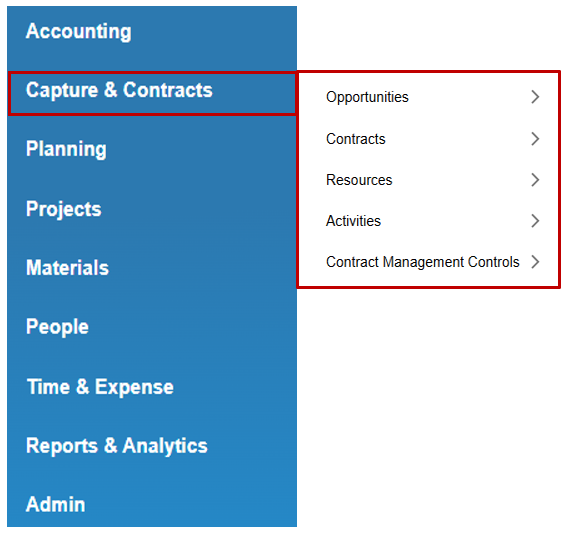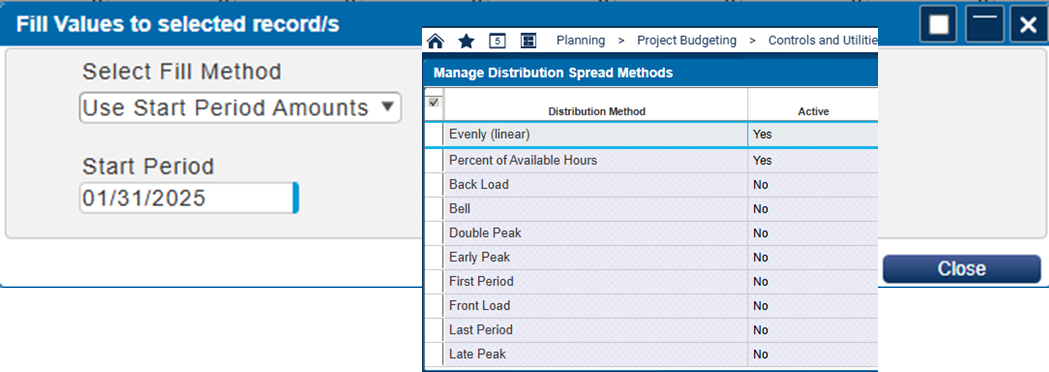Featured Costpoint Functionality
Automate Documents & Reports Using Costpoint’s Word Templates
Manual compilation of data for required reports and contractual agreements can be inefficient, time consuming, and risky. Preparation of contract briefs, subcontractor agreements, limitations of funds, and other documents can be labor intensive and take hours to prepare. Costpoint 8.2 provides several out-of-the-box Word templates that can help reduce the time spent preparing these documents.
In addition to accessing these templates, Costpoint users can create a form, or template-style format, in Microsoft Word. Data fields within a Costpoint screen are labeled and defined within the template allowing the report to run with just a click. The Word template becomes one of the print options directly out of the Costpoint screen. The result is a consistent report or document that contains the language needed and the specific details inserted in the appropriate locations within the document.
Word templates are one of the drop-down choices from the Print icon:

Deltek provides a set of Word templates for users:
- Related to Projects User Flow: Contract Brief.doc, Limitation of Funds.doc, and Customer Template.doc
- Related to Manage Contracts: Subcontractor Agreement.doc, Supplier Vendor Rating.doc, and NDA.doc
These Deltek Word templates are available to download from Deltek’s support site. KB#96085 contains a Working Templates.zip file, as well as links to helpful articles on how to install the Word add-in and upload templates.
Deltek Costpoint Office 365 Word Templates
Note: Word Templates are not currently available in Deltek’s GCCM Cloud environment.
Featured Costpoint Domain
Insights Into Lesser-Known Capabilities

Planning is the second of the nine Costpoint domains. Introduced in 2015, the domain was incorporated into Costpoint Version 7.1. Previously, Planning was a standalone product known as “Budgeting and Planning.” Over the past decade, more functionality and enhancement features have been added. Planning contains four distinct yet integrated capabilities: Organization Budgeting, Project Budgeting, New Business Budgeting (Business Development), and Resource Planning.
Here is a list of lesser-known features within the Planning domain:
Organization Budgeting > Rate Processing Reports
The Organization Budgeting module provides several alternatives for managing, viewing, and analyzing indirect rates at the organization level. Two particularly insightful reports include:
- Rate Analysis by Organization: This report allows review of a rate on an individual basis. It reports the rate produced by a specific organization allowing comparison of that specific organization’s target rate to visualize whether the organization is over-contributing or under-contributing to the rate.
- Rate Analysis Summary: This report enables review of all rates for a specific organization, allowing comparison of that specific organization’s combined or wrap rate, to the combined target rates. Organizations can see whether they are over-contributing or under-contributing to the combined target rate.
New Business Budgets
The use of New Business Budgets allows for freeform entry of proposed and future work, e.g., option years. Without the constraint of the defined project work breakdown structure (WBS), users can enter and incorporate budgets for future work into the pipeline, providing a forward-looking view into the company’s performance.
Project Budgets/Estimates at Completion (EACs)
The Project Budgets/EACs subtask features a fill capability to easily update values. Users can spread hours linearly, backload, frontload, bell curve, or customize how each cell is filled. Additional fill values include:
- “Use Start Period Amounts” for when a user wants to dedicate 100% of the resource to the project
- “Specify Hours” for when a user wants to book the resource for a specific number of hours each month
- “Copy From Source Record” for when the user wants to mimic another resource utilization.

Resource Planning
Resource Planning enables users to see how organizational resources and employees are allocated, including the utilization of each employee and established teams, providing transparency to overallocation and underutilization.
Organization Budgeting > Budget/Outlook Processing > Organization Budget Cycle Initialization
Organization Budgeting allows users to budget their PTO by either using specific hours, or a percentage based on configuration. When using the percentage method, the total should add to 100%. Users can also estimate when resources will take PTO, allowing for better planning of indirect rates.

The Defense Federal Acquisition Regulation Supplement (DFARS) requires systems that provide accurate, complete, and timely estimates, including consistency in estimating techniques and documentation. Federal Acquisition Regulation (FAR) Part 15 requires cost or pricing data to be accurate and reliable in negotiated procurement. By unlocking these functions, organizations can achieve additional efficiencies, compliance, and insights from the Deltek Costpoint Planning module, enhancing their overall financial management capabilities.
Breaking News/Items of Interest
Tariffs: Potential Avenues for Cost Recovery
With sweeping tariffs in effect, contractors may face a significant challenge: absorbing or recovering potentially substantial cost increases for raw materials and component parts. Relief may be possible through the FAR and DFARS.
Fixed-price and cost-type contracts have certain clauses that apply to each vehicle:
Fixed-Price Contracts
For contractors operating under fixed-price contracts, two key FAR clauses offer potential avenues for cost recovery:
- FAR 52.229-3, Federal, State, and Local Taxes: This clause allows for an upward adjustment of the contract price for "After-imposed Federal taxes," which includes any new or increased federal excise tax or duty (including tariffs), not initially included in the contract, and excluding employment taxes. This means that contractors may be able to recoup the added tariff costs, provided they were not factored into the original bid.
- FAR 52.216-4, Economic Price Adjustment — Labor and Material: This clause mandates negotiation with the contracting officer (CO) for price adjustments due to changes in labor rates or material costs. Crucially, contractors must notify the CO within 60 days of any price fluctuation and provide supporting documentation.
Cost-Reimbursable Contracts
For cost-reimbursable or flexibly priced contracts, the path to recovery is slightly different:
- FAR 31.201-2, Determining Allowability: This general cost principle dictates that costs must be reasonable, allocable, and compliant with relevant standards. While no specific tariff clause exists, FAR 31.205-41, Taxes, which generally allows for tax reimbursement unless explicitly prohibited, becomes the most relevant.
The contractor may also consider seeking duty exemptions under FAR Subpart 25.9 and DFARS Subpart 225.9. These regulations outline categories of foreign supplies eligible for exemption.
Economic Price Adjustment (EPA) Clauses
EPA clauses can provide relief for broader effects of tariffs, e.g., domestic price increases and inflation.
The adjustment mechanism in the specific clause will affect recovery. EPA clauses can be based on:
- Established prices, actual costs of labor or materials, or cost indexes of labor or materials
- The standard FAR EPA clauses typically limit adjustments to 10% of the original contract unit price
Industry Happenings

Join the Deltek Project Nation community for three days of learning, networking and fun. Sign up to be notified when registration opens.
Hilton Head Government Contracts Week 2025
Monday, July 28 – Friday, August 1, 2025
The Westin Hilton Head Island
Hilton Head Island, SC
This event features courses that cover critical topics in government contracting designed for both new and seasoned government contracting professionals. Your registration also includes access to a range of networking.
2025 National HUBZone Conference
Monday, July 21 – Friday, July 25, 2025
Westfields Marriott Washington Dulles
14750 Conference Center Dr, Chantilly, VA
Celebrating the 25th anniversary of the HUBZone program, this event features more exhibitors, government agencies, primes, and networking opportunities. The HUBZone Legislative Fly-In is a pivotal event offering council members the chance to connect with federal agency leaders and congressional officials to advocate for the HUBZone program.
2025 American Small Business Contracting Summit
Tuesday, July 22 – Wednesday, July 23, 2025
National Union Building918 F Street Northwest
Washington, D.C.
The 2025 American Small Business Contracting Summit will cover the latest details in small business contracting opportunities with the U.S. Department of Defense, prime defense contractors, and additional federal government agencies.